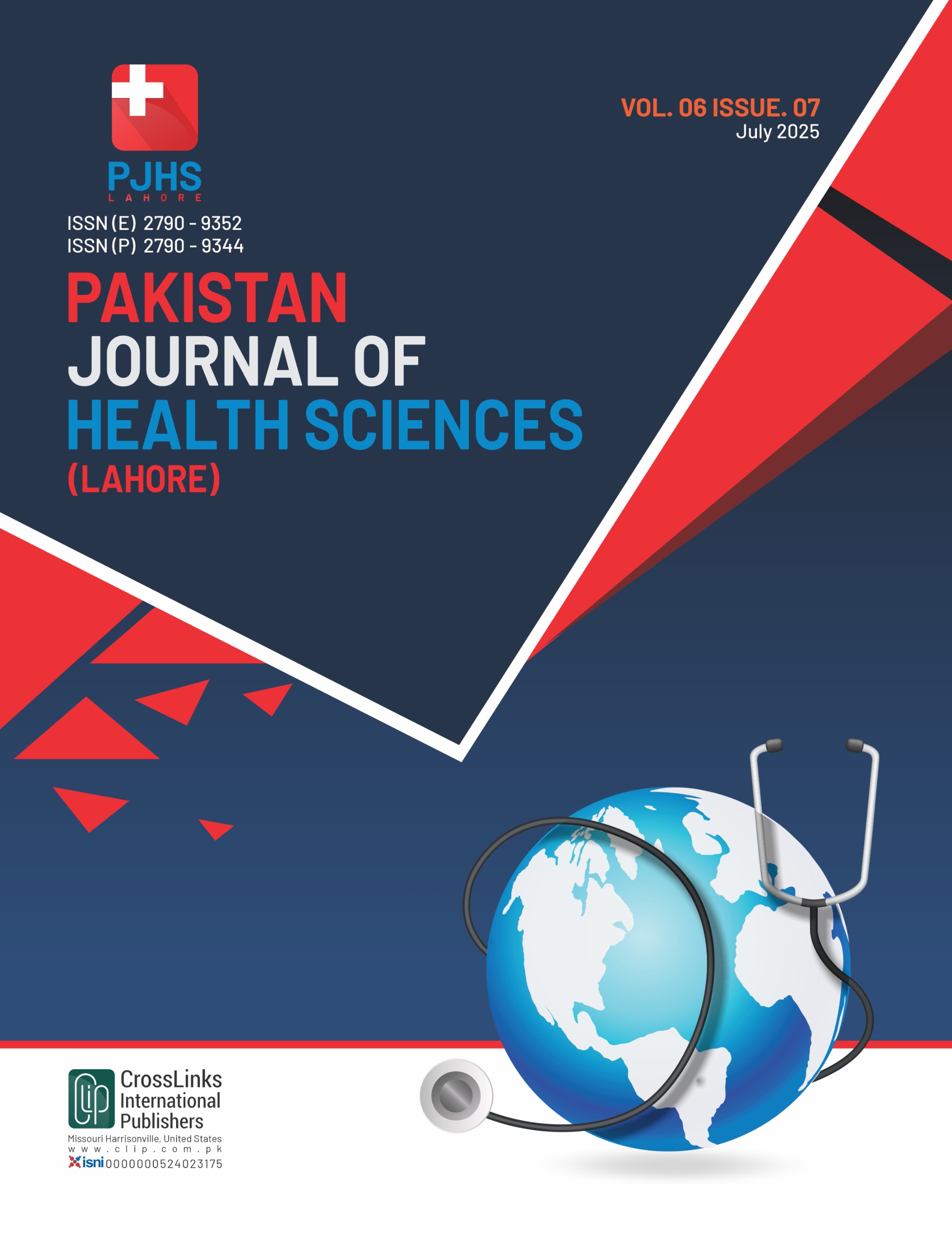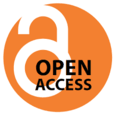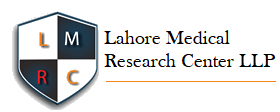Level of Integration in Modular System Curriculum in Medical Colleges of KPK, Pakistan
Integration in Modular System Curriculum
DOI:
https://doi.org/10.54393/pjhs.v6i7.3089Keywords:
Integrated Curriculum, Harden’s Ladder, Medical Education, Faculty PerceptionAbstract
Integrated medical education links basic sciences with clinical exposure, enhancing critical thinking. The World Federation of Medical Education (WFME) standards now require integrated teaching for graduates seeking US residency. KPK implemented Harden’s Ladder integration in 2018, but the extent of its integration is unknown. Objective: To assess the integration level using Harden's Ladder of Integration of medical colleges in KPK and examine variations across institutions, faculty profiles, and demographic data. Methods: A cross-sectional study was conducted from October 2024 to February 2025 across 13 public and private medical colleges within KPK. Faculty members received a validated questionnaire based on Harden's Ladder, which was distributed through convenience sampling. The study employed Chi-square and Fisher's exact tests to investigate the relationship between faculty demographics and levels of integration. Results: 99 faculty members participated. All faculty members reported full implementation of Step 5, which represents temporal coordination, whereas Steps 7-11 showed implementation in ≤50% of colleges (7 colleges). Senior faculty members with >3 years of experience observed better integration levels. The statistical analysis revealed significant institutional differences (p < 0.05) that were evenly distributed across colleges. Conclusions: Temporal coordination (Step 5) is fully implemented, but advanced integration is inconsistent. Faculty/institutional factors significantly influence outcomes, potentially compromising WFME accreditation requirements for US residency eligibility. Targeted interventions are recommended to bridge this gap.
References
Shoemaker BJ. Integrative education: A curriculum for the twenty-first century. OSSC Bulletin. 1989 Oct; 33(2): n2.
World Federation for Medical Education (WFME). Basic medical education: WFME global standards for quality improvement [Internet]. 2020 [cited: 23rd Feb 2025]. p. 11,15. Available from: https://wfme.org/wp-content/uploads/2022/03/WFME-BME-Standards-2020.pdf.
Quintero GA, Vergel J, Arredondo M, Ariza MC, Gómez P, Pinzon-Barrios AM. Integrated medical curriculum: advantages and disadvantages. Journal of Medical Education and Curricular Development. 2016 Jan; 3: JMECD-S18920. doi: 10.4137/JMECD.S18920. DOI: https://doi.org/10.4137/JMECD.S18920
Wijnen-Meijer M, Ten Cate OT, Rademakers JJ, Van Der Schaaf M, Borleffs JC. The influence of a vertically integrated curriculum on the transition to postgraduate training. Medical Teacher. 2009 Jan; 31(11): e528-32. doi: 10.3109/01421590902842417. DOI: https://doi.org/10.3109/01421590902842417
Wijnen‐Meijer M, Ten Cate OT, Van Der Schaaf M, Borleffs JC. Vertical integration in medical school: effect on the transition to postgraduate training. Medical Education. 2010 Mar; 44(3): 272-9. doi: 10.1111/j.1365-2923.2009.03571.x. DOI: https://doi.org/10.1111/j.1365-2923.2009.03571.x
Muthukumar T, Konduru RK, Manikandan M, Asir J, Iqbal N, Bazroy J et al. Scope of integrated teaching in a medical college: A study from South India. Journal of Medical Society. 2017 May; 31(2): 127-30. doi: 10.4103/jms.jms_98_16. DOI: https://doi.org/10.4103/jms.jms_98_16
Rehman R, Iqbal A, Syed S, Kamran A. Evaluation of integrated learning program of undergraduate medical students. Pakistan Journal of Physiology. 2011; 7(2): 37-41.
Aziz S, Wajid G, Khan RA, Zaidi FZ. Dimensions of challenges in transformation from traditional to integrated modular curriculum-Experiences from Pakistan. Pakistan Journal of Medical Sciences. 2023 Nov; 39(6): 1730. doi: 10.12669/pjms.39.6.6730. DOI: https://doi.org/10.12669/pjms.39.6.6730
Harden RM. The integration ladder: a tool for curriculum planning and evaluation. Medical Education-Oxford-. 2000 Jul; 34(7): 551-7. doi: 10.1046/j.1365-2923.2000.00697.x. DOI: https://doi.org/10.1046/j.1365-2923.2000.00697.x
Nayak BK. Understanding the Relevance of Sample Size Calculation. Indian journal of ophthalmology. 2010 Nov; 58(6): 469-70. doi: 10.4103/0301-4738.71673. DOI: https://doi.org/10.4103/0301-4738.71673
Baig N, Siddiqui F, Baig MA, Khursheed I, Meah KM. Level of integration in current undergraduate curricula of two private-sector medical colleges in Karachi. Canadian Medical Education Journal. 2022 Jul; 13(3): 84-90. doi: 10.36834/cmej.73910. DOI: https://doi.org/10.36834/cmej.73910
Cheema KM. Faculty perspective about difficulties in implementation of newly introduced integrated curriculum for basic sciences in king edward medical university. Pakistan Armed Forces Medical Journal. 2021 Jun; 30(3): 1078. doi: 10.51253/pafmj.v71i3.3521. DOI: https://doi.org/10.51253/pafmj.v71i3.3521
Burney AA, Burney IA, Dherwani K. Integrated Curriculum in Medical Schools in Pakistan-What? Why? When? and How Much. Annals of King Edward Medical University. 2024 Dec; 30(4): 433-9. doi: 10.21649/akemu.v30i4.5618. DOI: https://doi.org/10.21649/akemu.v30i4.5618
Arshad M, Mahmood S, Abid M, Baloch MF, Mansoor M, Butt ZP. Perception of Medical Students and Faculty Regarding Integrated Curriculum in A Medical Institute. 2025 Mar. doi: 10.51273/esc25.251321131.
Shah T, Zehra T, Irshad Z, Sultan BA, Afshan G, Wahid Y. Switching Trends in Medical Education: Faculty Perception. Pakistan Armed Forces Medical Journal. 2024 Oct; 74(5): 1392. doi: 10.51253/pafmj.v74i5.9123. DOI: https://doi.org/10.51253/pafmj.v74i5.9123
Trullàs JC, Blay C, Sarri E, Pujol R. Effectiveness of problem-based learning methodology in undergraduate medical education: a scoping review. BioMed Central Medical Education. 2022 Feb; 22(1): 104. doi: 10.1186/s12909-022-03154-8. DOI: https://doi.org/10.1186/s12909-022-03154-8
Shrivastava S, Manivasakan S, Shrivastava PS, Somu L. Perception of faculty toward challenges in teaching and the role of medical education workshops in addressing them: a mixed-methods study. Avicenna Journal of Medicine. 2022 Jan; 12(01): 021-30. doi: 10.1055/s-0042-1744434. DOI: https://doi.org/10.1055/s-0042-1744434
Malik AS and Malik RH. Twelve tips for developing an integrated curriculum. Medical teacher. 2011 Feb; 33(2): 99-104. doi: 10.3109/0142159X.2010.507711. DOI: https://doi.org/10.3109/0142159X.2010.507711
Husain M, Khan S, Badyal D. Integration in medical education. Indian Pediatrics. 2020 Sep; 57(9): 842-7. doi: 10.1007/s13312-020-1964-x. DOI: https://doi.org/10.1007/s13312-020-1964-x
Achike FI. The challenges of integration in an innovative modern medical curriculum. Medical Science Educator. 2016 Mar; 26(1): 153-8. doi: 10.1007/s40670-015-0206-7. DOI: https://doi.org/10.1007/s40670-015-0206-7
Asad M and Khaliq T. Faculty perception regarding integrated curriculum at undergraduate level: a qualitative study. Pakistan Armed Forces Medical Journal. 2020 Feb; 29(1): 217.
Downloads
Published
How to Cite
Issue
Section
License
Copyright (c) 2025 Pakistan Journal of Health Sciences

This work is licensed under a Creative Commons Attribution 4.0 International License.
This is an open-access journal and all the published articles / items are distributed under the terms of the Creative Commons Attribution License, which permits unrestricted use, distribution, and reproduction in any medium, provided the original author and source are credited. For comments













